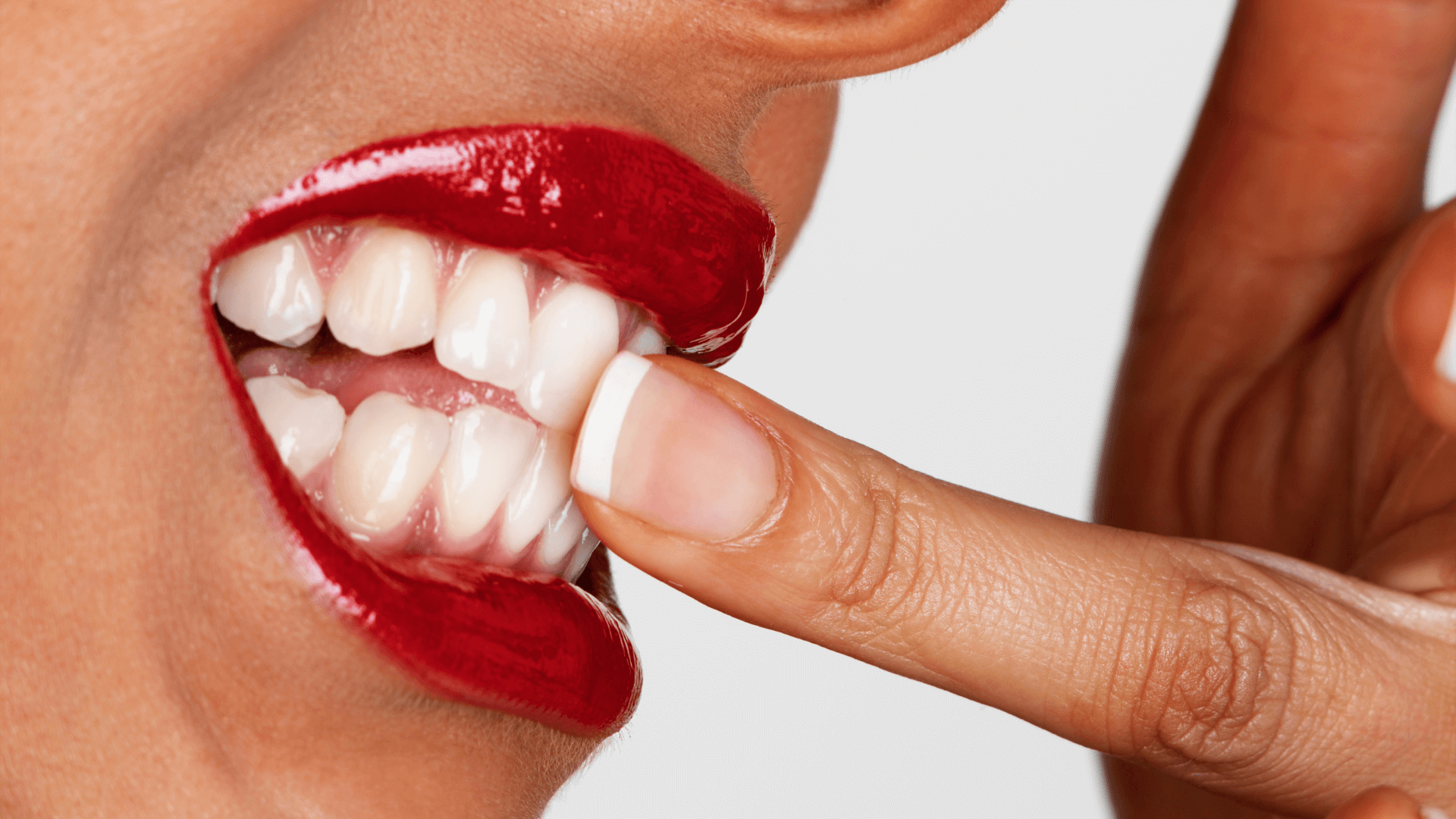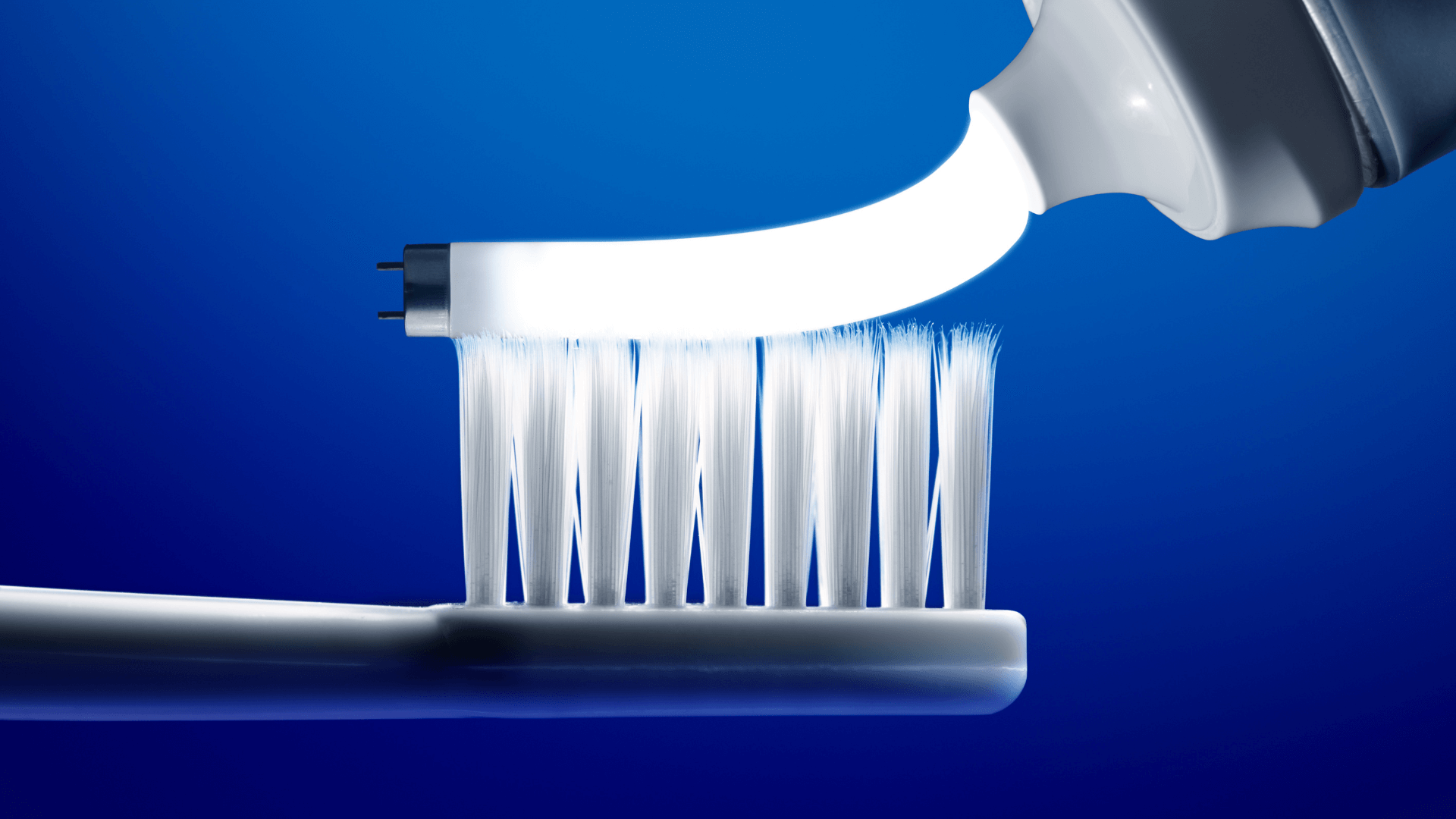Poor oral health may contribute to declines in brain health

yyadmin
Source; The Dentist, Mark Allen Group, England. 04 February 2023
Taking care of your teeth and gums may offer benefits beyond oral health, such as improving brain health, according to preliminary research to be presented at the American Stroke Association’s International Stroke Conference 2023.
Studies have shown that gum disease, missing teeth and other signs of poor oral health, as well as poor brushing habits and lack of plaque removal, increase stroke risk. According to NICE, “Stroke is a leading cause of death and disability, causing around 38,000 deaths each year in the UK.” Previous research has also found that gum disease and other oral health concerns are linked to heart disease risk factors and other conditions like high blood pressure.
Cyprien Rivier, study author and a postdoctoral fellow in neurology at the Yale School of Medicine, said, “What hasn’t been clear is whether poor oral health affected brain health, meaning the functional status of a person’s brain, which we are now able to understand better using neuroimaging tools such as magnetic resonance imaging or MRI. Studying oral health is especially important because poor oral health happens frequently and is an easily modifiable risk factor – everyone can effectively improve their oral health with minimal time and financial investment.”
Just as healthy lifestyle choices impact the risk of heart disease and stroke, they also affect brain health, including one’s ability to remember things, think clearly and function.
Between 2014 and 2021, researchers in this study analysed the potential link between oral health and brain health among about 40,000 adults (46 per cent men, average age 57 years) without a history of stroke enrolled in the U.K. Biobank. Participants were screened for 105 genetic variants known to predispose persons to have cavities, dentures and missing teeth later in life. The relationship between the burden of these genetic risk factors for poor oral health and brain health was evaluated.
Signs of poor brain health were screened via MRI images of the participants’ brains: white matter hyperintensities, defined as accumulated damage in the brain’s white matter, which may impair memory, balance and mobility; and microstructural damage, which is the degree to which the fine architecture of the brain has changed in comparison to images for a normal brain scan of a healthy adult of similar age.
The analysis found:
People genetically prone to cavities, missing teeth or needing dentures had a higher burden of silent cerebrovascular disease, as represented by a 24 per cent increase in the amount of white matter hyperintensities visible on the MRI images.
Those with overall genetically poor oral health had increased damage to the fine architecture of the brain, as represented by a 43 per cent change in microstructural damage scores visible on the MRI scans. Microstructural damage scores are whole-brain summaries of the damage sustained by the fine architecture of each brain region.
Cyprien said, “Poor oral health may cause declines in brain health, so we need to be extra careful with our oral hygiene because it has implications far beyond the mouth. However, this study is preliminary, and more evidence needs to be gathered – ideally through clinical trials – to confirm improving oral health in the population will lead to brain health benefits.”
The analysis was limited by the fact that the UK Biobank includes only people who reside in the U.K., and they are predominantly of European ancestry (94 per cent of the U.K. Biobank participants reported their race as white vs 6 per cent reported as mixed, Black British, Asian British or other). In addition, more research among people from diverse racial and ethnic backgrounds is needed.
Joseph P. Broderick, a professor at the University of Cincinnati department of neurology and rehabilitation medicine, said, “Environmental factors such as smoking and health conditions such as diabetes are much stronger risk factors for poor oral health than any genetic marker – except for rare genetic conditions associated with poor oral health, such as defective or missing enamel.
“It is still good advice to pay attention to oral hygiene and health. However, since people with poor brain health are likely to be less attentive to good oral health compared to those with normal brain health, it is impossible to prove cause and effect. Also, genetic profiles for increased risk of oral health may overlap with genetic risk factors for other chronic health conditions like diabetes, hypertension, stroke, infections, etc., that are known to be related to brain imaging markers.“
For the main source of the article:
Effectiveness of nano-hydroxyapatite toothpaste in reducing dentin hypersensitivity: A double-blind randomized controlled trial.

yyadmin
Michele Vano, DDS, PhD1/Giacomo Derchi, DDS, PhD, MSc2/Antonio Barone, DDS, PhD1/Ugo Covani, DMD3
Dentin hypersensitivity is a common dental clinical condition in permanent teeth and has been defined as acute pain for a short duration arising from the exposed dentin in response to thermal, evaporative, tactile, osmotic, or chemical stimuli, which cannot be ascribed to any other form of dental defect or pathol- ogy by the presence of open dentinal tubules on an exposed dentinal surface.
Several theories have been used to explain the mechanisms of dentin hypersensitivity. The most widely accepted is the “hydrodynamic theory” proposed by Brännström in 1963.
According to this theory, open tubules of exposed dentin allow the movement of dentinal fluid within the dentinal tubules indirectly stimulating the pulp nerves. In support of this theory, individuals with dentin hypersensitivity show open dentinal tubules that are wider and more numerous than nonsensitive surfaces, which are mainly covered by a smear layer.
To read all the articles click below:
What is the Story of StyleItaliano group?!

yyadmin
FEASIBLE, TEACHABLE AND REPEATABLE
Style Italiano recipe for successful dental procedures
The Style Italiano movement emerged from a simple idea of two friends – Walter Devoto and Angelo Putignano. The recognized experts in conservative and aesthetic dentistry had observed that materials allowing for the creation of beautiful direct restorations were available, but there was a lack of appropriate concepts for their successful use.
Anyone who wanted to imitate natural teeth in a perfect way needed artistic skills, creativity, and lots of time to practice.
- Since time is a scarce resource in every dental office, the two friends decided to develop simplified techniques that enable every dentist to obtain impressive results with direct composite materials.
- Their practical suggestions are based on clear and precise ideas that help dentists face their own daily challenges in their dental office.
All concepts have three things in common:
FEASIBLE
With the materials available on the market as INGREDIENTS and the Style Italiano techniques as RECIPES, it becomes easy for dental practitioners to obtain the desired results. Every step in the procedure is described in a detailed way in order to make sure that it is copied and implemented easily.
Instead of suggesting materials of a specific manufacturer, Style Italiano offers an independent perspective and understanding of the materials’ use – based on scientific research and personal experience.
TEACHABLE
We share our knowledge and spread our ideas with passion – both as lecturers teaching around the world and as authors on our online platforms. Apart from this website, we run facebook pages for restorative dentistry and endodontics and a facebook community.
As we believe that our techniques can only be used successfully by our colleagues if they are easily comprehensible, we develop teaching content that is transparent and understood without effort. In this context, we leverage our more than 20 years of experience in teaching dentistry to create a unique learning experience.
REPEATABLE
The techniques, ideas and suggestions we develop must be useful to and replicable for any dental practitioner, independent of his or her individual skills. Based on this insight, it became clear to us that we needed the feedback of our community and – even more daring – wanted to encourage our members to share their own ideas. Hence, we started to establish platforms that allow for multidirectional communication and knowledge sharing. This experiment turned out to be extremely engaging and exciting!
Style Italiano became a team of professionals who support each other and help others improve, always showing them that “YOU can do what WE do”. News, articles and cases are published by our members every week. Non-members are invited to submit their own case for publication at the community page of this website.
For more information you can visit the official website https://www.styleitaliano.org
The history of oral hygiene products

yyadmin
The history of oral hygiene products: how far have we come in 6000 years?
Stuart Fischman
The Pros and Cons of Fluoridation

yyadmin
The Fluoride Debate: The Pros and Cons of Fluoridation
Antoine Aoun, corresponding author Farah Darwiche, Sibelle Al Hayek, and Jacqueline Doumit.
Fluoride is the ionic form of fluorine, the thirteenth most abundant element in the earth’s crust. It is released into the environment naturally in both water and air. Its concentration in water is variable. Water is the major dietary source of fluoride. The variability in water content explains much of the variability in total fluoride intake. Other important sources of fluoride are tea, seafood that contains edible bones or shells, medicinal supplements, and fluoridated toothpastes.
Fluoride compounds are also produced by some industrial processes that use the mineral apatite, a mixture of calcium phosphate compounds. Dietary fluoride is absorbed rapidly in the stomach and small intestine.
Fluoride works to control early dental caries in several ways. Due to its anticariogenic and antimicrobial properties, the fluoride ion (F−) has been widely used in the treatment of dental caries. The antibacterial action of fluoride is due to the acidification of the bacterial cytoplasm through the formation of hydrogen ion (H+) and F− from hydrogen fluoride and the disruption of the bacterial metabolism by inhibiting vital bacterial enzymes such as proton releasing adenosine triphosphatase and enolase.
Moreover, the use of fluoride lowers the pH. Bacteria will thus use more energy to maintain a neutral pH. Therefore, they will have less energy left to grow, reproduce and generate acid and polysaccharides.
The mechanisms of fluoride oral action suggested by Ullah et al. include the following:
- reduction in de-mineralization of sound enamel by inhibiting microbial growth and metabolism,
- enhancement of the remineralization and the recovery of demineralized enamel, and the formation of the fluorapatite mineral phase that provides more resistance to demineralization and acid dissolution following acid production by bacteria,
- inhibition of enzymes such as reduction of immunoglobulin A protease synthesis; reduction in extracellular polysaccharide production which helps in decreasing bacterial adherence to dental hard tissues.
As fluoride concentrates in dental plaque, it inhibits the process by which cariogenic bacteria metabolize carbohydrates to produce acid and adhesive polysaccharides.
Dental caries is an infectious and multifactorial disease afflicting most people in industrialized and developing countries. Fluoride reduces the incidence of dental caries and slows or reverses the progression of existing lesions. Although pit and fissure sealants, meticulous oral hygiene, and appropriate dietary practices contribute to caries prevention and control, the most effective and widely used approaches include fluoride use.
Dental treatments are expensive throughout the world. The cost of dentistry has hardly been reduced, even in countries where the decline in caries began 30 years ago. Thus, extension of preventive dentistry is still indispensable for improving oral health. The absence of dental care and poor hygiene are still considered the main causes of dental decay.
Although multifactorial in origin, caries is a preventable disease, with fluoride as a preventive agent used worldwide. Several modes of fluoride use have evolved, each with its own recommended concentration, frequency of use, and dosage schedule. Concurrently, recent opposition has been growing worldwide against fluoridation, emphasizing the potential and serious risk of toxicity. Since the fluoride benefit is mainly topical, perhaps it is better to deliver fluoride directly to the tooth instead of ingesting it. Fluoride toothpaste, rinses and varnish applications have proven their effectiveness in some countries, but they are still not universally affordable.
Click here for the source of the article.
Bad Breath? Or Halitosis?

yyadmin
Halitosis can cause significant worry, embarrassment, and anxiety but it is relatively easy to remedy.
Fast facts on bad breath
Here are some key points about bad breath. More detail and supporting information are in the main article. Bad breath is estimated to affect 1 in 4 people globally.
The most common cause of halitosis is bad oral hygiene. If particles of food are left in the mouth, their breakdown by bacteria produces sulphur compounds. Keeping the mouth hydrated can reduce mouth odour. The best treatment for bad breath is regular brushing, flossing, and hydration.
What is halitosis?
Bad breath is a common problem that can cause significant psychological distress. There are a number of potential causes and treatments available.
Anyone can suffer from bad breath. It is estimated that 1 in 4 people have bad breath on a regular basis.
Halitosis is the third most common reason that people seek dental care, after tooth decay and gum disease.
Simple home remedies and lifestyle changes, such as improved dental hygiene and quitting smoking, can often remove the issue. If bad breath persists, however, it is advisable to visit a doctor to check for underlying causes.
Potential causes of bad breath include:
- Tobacco: Tobacco products cause their own types of mouth odor. Additionally, they increase the chances of gum disease which can also cause bad breath.
- Food: The breakdown of food particles stuck in the teeth can cause odors. Some foods such as onions and garlic can also cause bad breath. After they are digested, their breakdown products are carried in the blood to the lungs where they can affect the breath.
- Dry mouth: Saliva naturally cleans the mouth. If the mouth is naturally dry or dry due to a specific disease, such as xerostomia, odors can build up.
- Dental hygiene: Brushing and flossing ensure the removal of small particles of food that can build up and slowly break down, producing odor. A film of bacteria called plaque builds up if brushing is not regular. This plaque can irritate the gums and cause inflammation between the teeth and gums called periodontitis. Dentures that are not cleaned regularly or properly can also harbor bacteria that cause halitosis.
- Crash diets: Fasting and low carbohydrate eating programs can produce halitosis. This is due to the breakdown of fats producing chemicals called ketones. These ketones have a strong aroma.
- Drugs: Certain medications can reduce saliva and, therefore, increase odours. Other drugs can produce odours as they breakdown and release chemicals in the breath. Examples include nitrates used to treat angina, some chemotherapy chemicals, and some tranquilizers, such as phenothiazines. Individuals who take vitamin supplements in large doses can also be prone to bad breath.
- Mouth, nose, and throat conditions: Sometimes, small, bacteria-covered stones can form on the tonsils at the back of the throat and produce odour. Also, infections or inflammation in the nose, throat, or sinuses can cause halitosis.
- Foreign body: Bad breath can be caused if they have a foreign body lodged in their nasal cavity, especially in children.
- Diseases: Some cancers, liver failure, and other metabolic diseases can cause halitosis, due to the specific mixes of chemicals that they produce. Gastroesophageal reflux disease (GERD) can cause bad breath due to the regular reflux of stomach acids.
Treatment
The best method to reduce halitosis is good oral hygiene. This ensures that cavities are avoided and reduces the likelihood of gum disease.
It is recommended that individuals visit the dentist for a check-up and cleaning twice a year.
The dentist may recommend a toothpaste that includes an antibacterial agent or an antibacterial mouthwash.
Alternatively, if gum disease is present, professional cleaning may be necessary to clear out the build-up of bacteria in pockets between the gums and teeth.
Click here for the source of the article.
Abrasion, Polishing, Stain removal of your Toothpaste

yyadmin
Abrasion, Polishing, and Stain Removal Characteristics of Various Commercial Dentifrices In Vitro
Bruce R. Schemehorn, MS, Dental Products Testing, Therametric Technologies, Inc. Noblesville, IN, USA, Michael H. Moore, MS Mark S. Putt, MSD, PhD, Health Science Research Center Indiana University-Purdue University Fort Wayne, IN, USA
To evaluate, using conventional in vitro procedures, the abrasivity, enamel polishing properties, and stain removal effectiveness of various commercial dentifrices that have a variety of compositions and are marketed for cleaning, whitening, and/or polishing capabilities, and to examine their relationships between stain removal and abrasivity.
An ideal dentifrice should provide optimum cleaning (i.e., extrinsic stain removal) and polishing with minimum abrasion to the dental hard tissues (viz. cementum, dentin, and enamel). Maximum stain removal ability and low abrasivity are diametric opposites, as are high cleaning and high polishing.
Thus, it is in-evitable that some concessions must be made in order to achieve a suitable compromise, a fact that accounts for the large differences in stain removal, polishing, and abrasion properties of the various abrasive agents used in commercial dentifrices currently available to the public.
The balance between extrinsic stain removal and abrasivity properties of dentifrices has been investigated and debated for a very long time, but there is general consensus with the statement by Kitchin and Robinson26 more than 60 years ago that, “One should use only as much abrasion as necessary to clean one’s teeth.”
The challenge, of course, is in defining what is necessary. The results of this investigation are in agreement with earlier reports that generally there is moderate correlation between in vitro cleaning effectiveness and abrasiveness to dentin for various toothpastes, but RDA values are not always predictive of clinical stain removal. Still, it is very relevant to this investigation that both the RDA test and the PCR method correlated linearly with cleaning power (i.e., stain removal) in a collaborative clinical study using three different grading methods that evalu- ated dentifrices with three different levels of abrasivity
Stain removal ability, abrasivity, and enamel polishing capa- bilities of dentifrices, especially those containing silicas, were highly variable, and there was no consistent relationship for
these parameters that was associated with the abrasive systems as listed on product labels.
Dentifrices marketed as “whitening” products generally were more abrasive than other products, al- though there were some exceptions, and a direct relationship was not always evident between dentifrice stain-removal ability and abrasivity.
Similarly, with one exception, dentifrices marketed for their ability to polish or to impart luster to teeth were no more effective than other products. When stain-removal and abrasiv- ity parameters were incorporated into a cleaning efficacy index CEI, several products containing hydrated silica and/or dicalcium phosphate had relatively high CEI values, but the most efficient dentifrice tested contained refined “kaolin” clay as the abrasive.
Click below to download/read the full article.
Protected by a safe toothpaste Abrasivity

yyadmin
Protected by a safe RDA: Setting the record straight about toothpaste abrasivity.
By Pamela Maragliano-Muniz, DMD
Dental professionals hear a lot of opinions about toothpaste abrasivity. There are misunderstandings about the meaning of relative dentin abrasion (RDA) values and what they convey about the safety of a toothpaste. It can be difficult to distinguish fact from fiction. For example, a common misperception is that a toothpaste with an RDA below 100 is safer than one with an RDA of 200. This just isn’t true. The fact is that a toothpaste with an RDA of 250 is just as safe as a toothpaste with an RDA of 0-249. Any toothpaste with an RDA of ≤250, the recognized threshold for safety, is safe for a lifetime of use.
The concern about toothpaste abrasivity is related to tooth wear, an important issue that has gotten quite a bit of attention lately. Tooth wear is multifactorial, and toothpaste abrasives play only a small role in the process compared to other contributing factors. The purpose of this article is to explore the role of abrasives in dentifrice, describe the test that measures toothpaste abrasivity and how these results should be interpreted, and outline implications for clinical practice.
The ISO specification states that a toothpaste should not exceed an RDA of 250, which is considered the safe limit for hard tissues, and that toothpaste with an RDA value below 250 is safe for daily use. This upper limit of “250” is 2.5 times the abrasiveness of the reference standard. Since the ISO and ADA standards were established, the industry has largely self-regulated and toothpastes with an RDA value over 250 have been removed from the market. The ISO standards ensure that all products for sale meet the standards for safety.
Stain removal-There is typically a much lower stain removal benefit for toothpastes with RDA values less than 100 compared to those with values greater than 100. Once you exceed an RDA value of 250, there is little incremental stain removal benefit (see Figure 1).
Dentin wear-A prevailing belief is that a lower RDA value is safer and there have been claims that an RDA value over 150 is considered unsafe. There is no clinical basis for this assertion and this “information,” most commonly accessible on the internet, is incorrect and misleading. Clinical studies looking at the difference in dentin wear between toothpastes with various RDA levels below 250 have not shown a significant difference in wear.6,7 Toothpastes should be considered as either “less than” or “more than” the RDA upper limit of 250-like a “pass/fail” test. There are no degrees of safety below 250.
The RDA test is an indication of the abrasive potential of a toothpaste as tested under laboratory conditions, which are much more extreme than typical everyday brushing.
For example, the RDA test does not include pellicle, which plays a major role in protecting the teeth from wear processes in real life. Furthermore, the RDA method generally includes 1,500 continuous, horizontal manual toothbrush strokes, which is equivalent to approximately two months of brushing all at once. Most patients only spend about 5 seconds brushing each tooth surface and under these conditions the protective pellicle is not removed.
Here are the three key takeaways about toothpaste abrasivity:
- Abrasive compounds are important to remove stain and to efficiently remove plaque during toothbrushing.
- The RDA test is an indication of the abrasive potential of a dentifrice as tested under laboratory conditions, which are more extreme than typical everyday brushing. A toothpaste with an RDA equal to or under 250 is safe for a lifetime of use.
- It’s important to assess patients for all tooth wear risk factors; relative to erosion and attrition, toothpaste abrasivity plays a small role in tooth wear.
Link to the source click here.
